There is an opinion on many forums that the mobile device market used to be much more interesting than it is now – in the past, manufacturers were not afraid to experiment and made really interesting gadgets, and now they are releasing remnants that are similar to each other. This is a controversial claim, but a strong point in its favor is the Siemens SX1 from 2003 – one of the most astounding smartphones ever. So impressive that if introduced this year it wouldn’t look too dated. Comparison with the iPhone in the title is no coincidence – the SX1 can compete with the “apples” not only in the number of innovations, but also in the date of their presentation.
This article is inspired by the material GSMArena and the notes of collectors from the Siemens Mobile community on VKontakte, it is entirely devoted to the Siemens SX1, but not only innovations in it, but in general interesting solutions that set it apart (and still distinguish it) from the background of others …
Unusual keyboard spaced to the sides of the screen
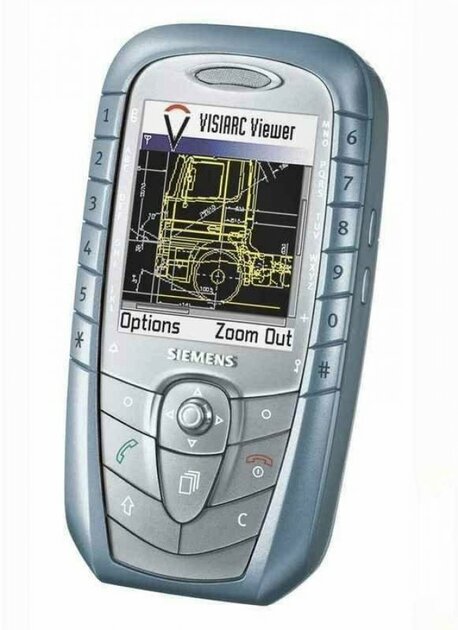

The most prominent part of Siemens SX1 is undoubtedly the keyboard – keys from “0” to “9”, as well as an asterisk and a lattice are not installed at the bottom, as in the vast majority of mobile phones of that time, but on the sides of the display. This decision was made to make the smartphone as compact as possible without the use of too small inconvenient buttons, but in reality it turned out to be contradictory: on the one hand, the smartphone immediately caught the eye thanks to its design and was really miniature; on the other hand, such an implementation was frankly uncomfortable for text input. The design did not allow you to conveniently type with one finger, forcing you to hold the smartphone with two hands – users and reviewers noted the keyboard as the main disadvantage, because this device is still a smartphone, where text input plays a key role.
💡 Siemens SX1 became the first smartphone of the company running Symbian (version 6.1, platform S10 v1.0 UI) – and at the same time the first notNokia on this operating system.
Thoughtful built-in games, one ahead of its time and the iPhone

GIF animation (24 MB) clickable | YouTube channel “Kirill Leifer”
The manufacturer himself knew about the inconvenience of the keyboard, and even before the release of the model on the market. Although it supported the T9 predictive input technology, users needed to be trained to interact with it. To do this, Siemens engineers resorted to a simple but ingenious idea: they created the Typegun game to train the skill of working with such a keyboard. Its essence was for the user to enter the numbers displayed on the screen in the allotted time. This game was hardly the most interesting time killer, but it helped to get used to the unusual keyboard as quickly as possible.
💡 A similar idea of teaching users through games was used by Microsoft back in Windows XP, introducing people to the capabilities of the mouse through the game “Klondike.”
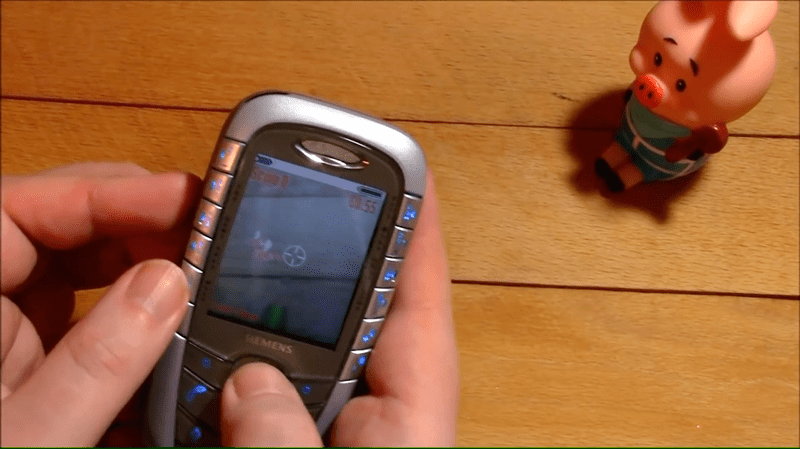
GIF animation (19 MB) clickable | YouTube channel KMreview
But the game Mozzies was already addictive (after all, in fact, it used augmented reality – the technology of displaying virtual objects on the real world transmitted by the camera, which Apple began to promote only in 2017 with the announcement of iOS 11 and the ARKit platform). It worked as follows: the Siemens SX1 camera transmitted the world around it, and virtual mosquitoes appeared on the display; the player’s task is to kill them with a virtual cannon, aiming at them with the help of a smartphone movement.
It is worth emphasizing that this augmented reality game was presented in a gadget from 2003 with a 120 MHz single-core processor (namely megahertz) and, most importantly, without an accelerometer. It was a real breakthrough, and Mozzies won a well-deserved award as the best mobile game of 2003. The Siemens SX1 with Mozzie was even mentioned in a 2005 scientific paper by Volker Paelke and Christian Reimann on the potential of mixed reality technology.
For comparison, the frequency of one of eight cores in modern chipsets reaches 3 GHz (Snapdragon 888+), that is, it is 25 times higher than it was in Siemens SX1. Despite everything, in 2003 such a processor was considered one of the best – the same competing Nokia 6600 had a chipset frequency of 104 MHz. Perhaps it was these 16 MHz that turned out to be useful in use, because on the Finnish smartphone an MP3 player was connected, but on the German model it was not. To be fair, it should be noted that in the JBenchmark benchmark, the German novelty scored 1720 points, while the Nokia 6600 got 2325 points (according to Mobile-review.com) – the bottleneck, apparently, was the graphics subsystem.
💡 Siemens SX1 became the first smartphone with an MP3 player based on the S60 platform. To listen to music, it was necessary to record it into the “MP3” folder on an MMC memory card and use the supplied headphones. A separate application was responsible for the playback, which many praised.
Several limited editions, including a collaboration with McLaren
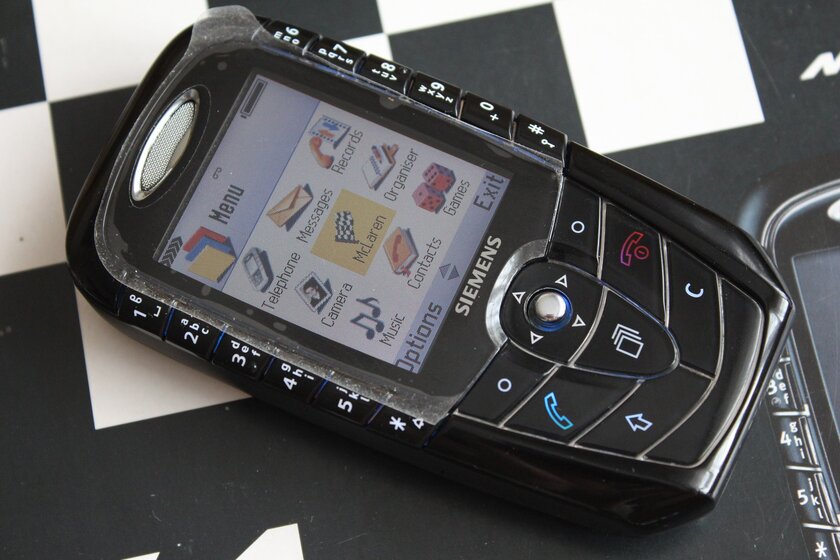
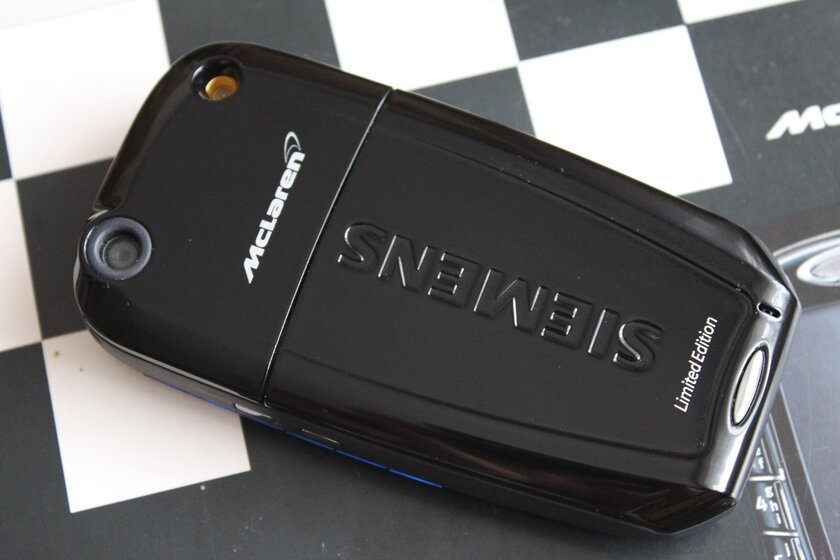
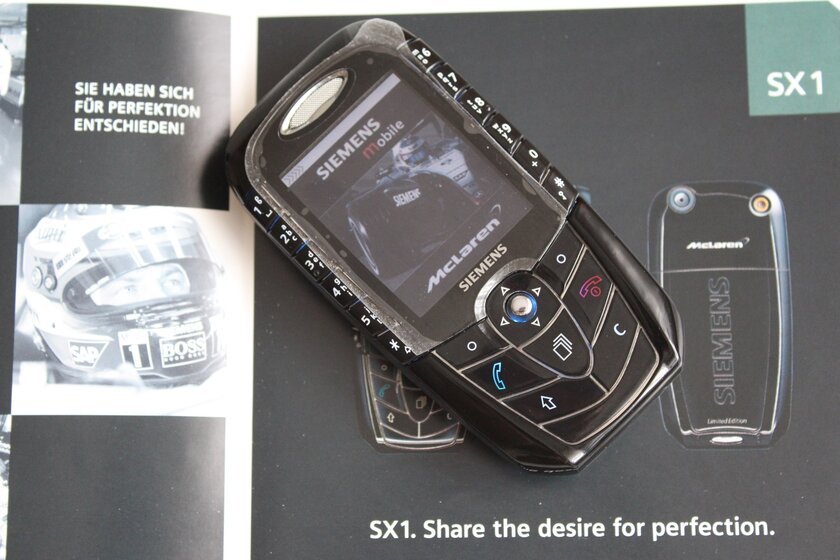
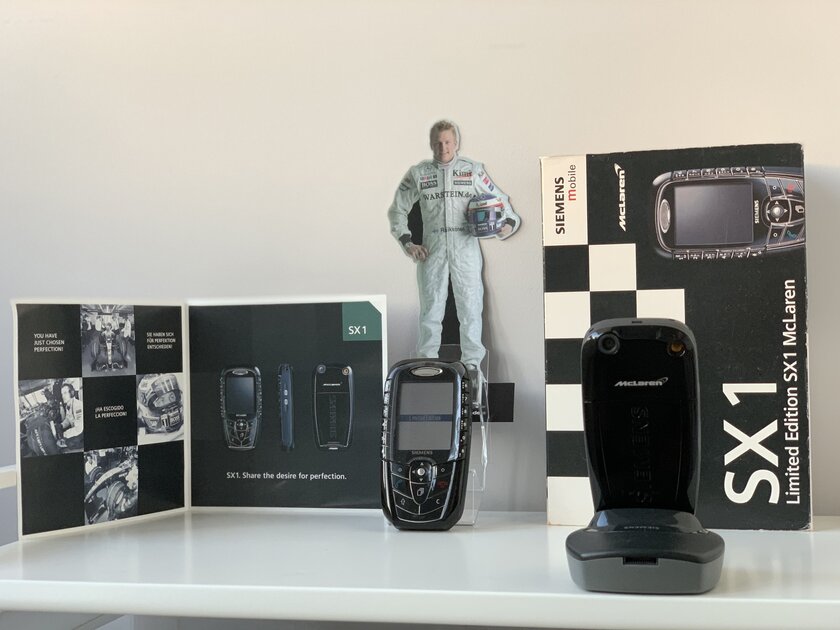
Siemens SX1 was announced in 2003, but at the CeBIT 2004 conference the manufacturer presented a limited edition Siemens SX1 McLaren (only 200 copies) – the smartphone received a black lacquered color and featured wallpapers, screensavers, animations, as well as pre-loaded photos of the Formula 1 racing car. McLaren MP4-19 and riders Kimi Raikkonen and David Coulthard. By the way, there is an even rarer version of Siemens SX1 McLaren autographed by Kimi Raikkonen on the back cover (in fact, a special edition of a special edition), but the painting was easily erased, so now it is almost impossible to find such a version even from collectors.
At that time, such a collaboration of brands was a rarity – it is now that marketers have guessed that such a solution can be used as an excellent advertisement. For example, OnePlus entered into its multi-year agreement with the same McLaren only 15 years after Siemens.
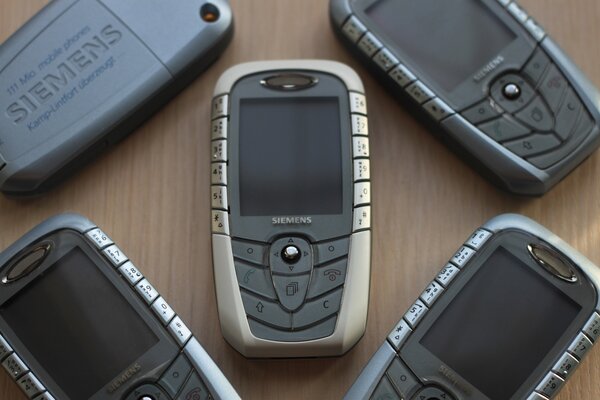

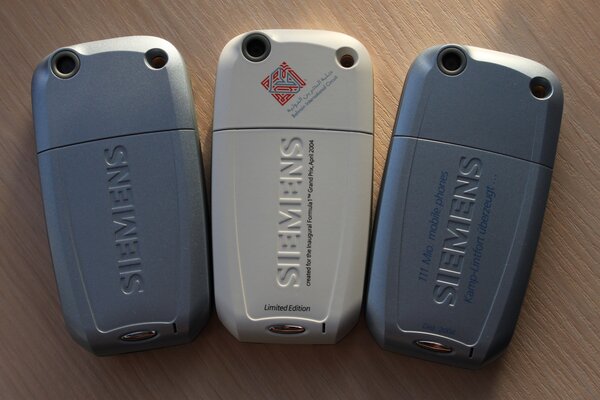
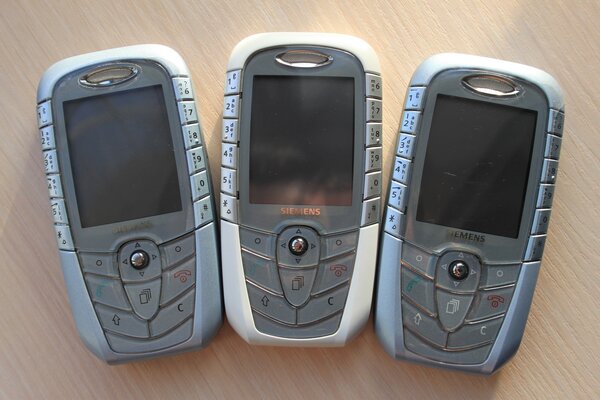
By the way, the Germans produced an even more limited version of the SX1 in honor of the Formula 1 car – a very rare Siemens SX1 F1 Bahrain 2004 with a circulation of 50 units. It was timed to coincide with the opening of the highway in the Kingdom of Bahrain.
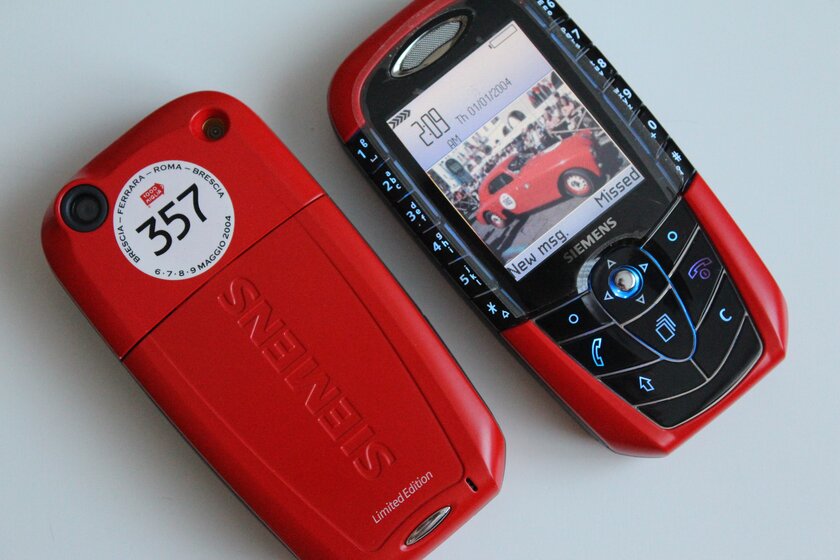
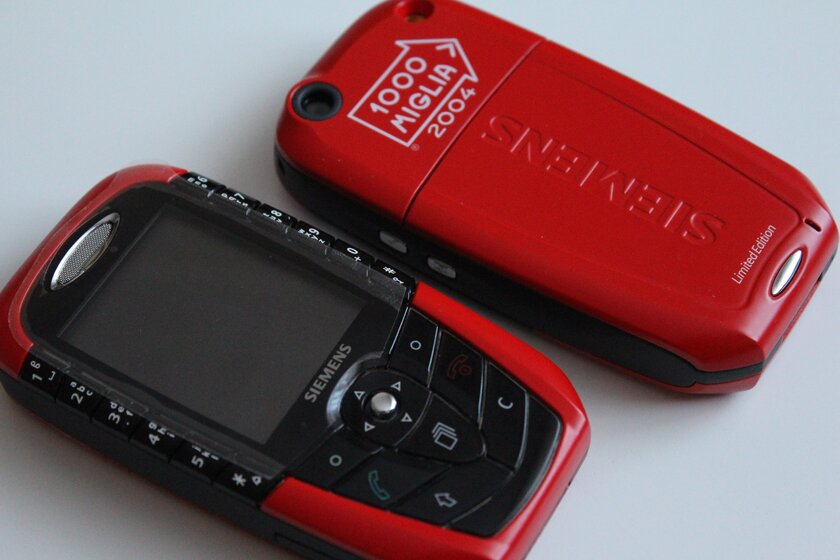
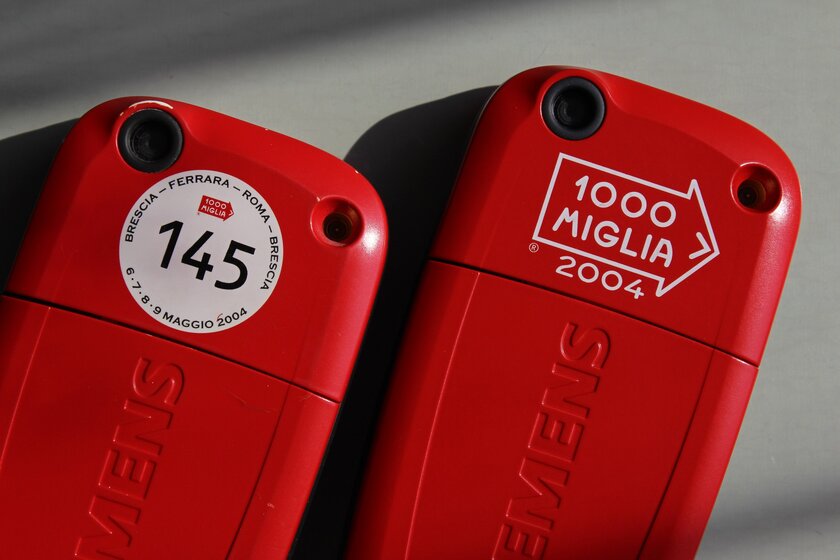
There were also two editions of the Mille Miglia in honor of the endurance race of the same name in Italy: the “regular” in 500 units and the Mille Miglia Fahrer in the amount of 99 units, given directly to the riders. It is no coincidence that the company’s desire to publish many publications in honor of the automotive world is not accidental – in those years Siemens was a sponsor of sports car competitions many times.
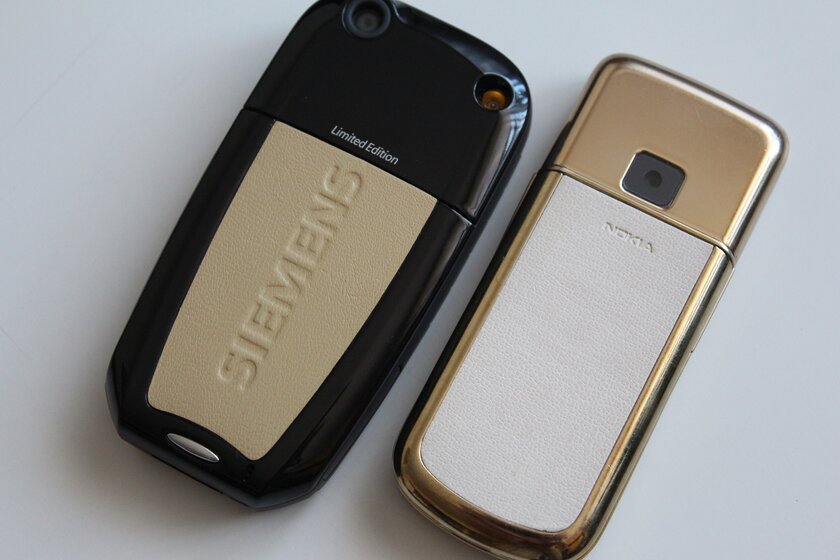
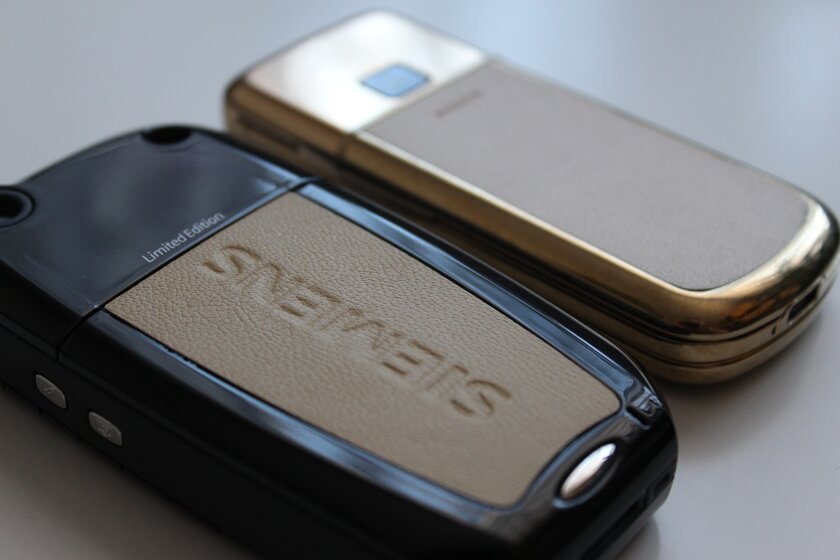
💡In total, Siemens SX1 had 12 limited editions – many of them were intended for branding by mobile operators and turned out to be absolutely the same as the original model in Ice Blue, just with additional inscriptions or logos. But there were also interesting options – for example, Kangaroo Leather (500 copies) with a lid covered with kangaroo leather.
The basis for several prototypes: one is a revolution, the other has an absurd story
Equipped with good hardware, the Siemens SX1 has become the basis for several interesting prototypes, each of which has already entered history – one thanks to an absurd story. Both of them were presented at the CeBIT 2005 conference.
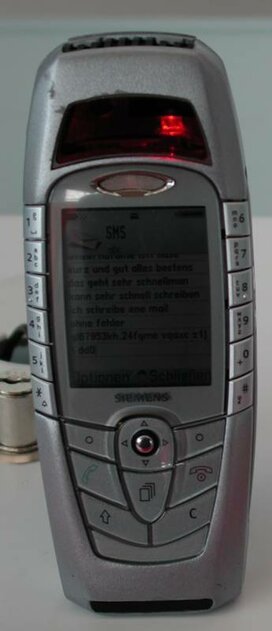
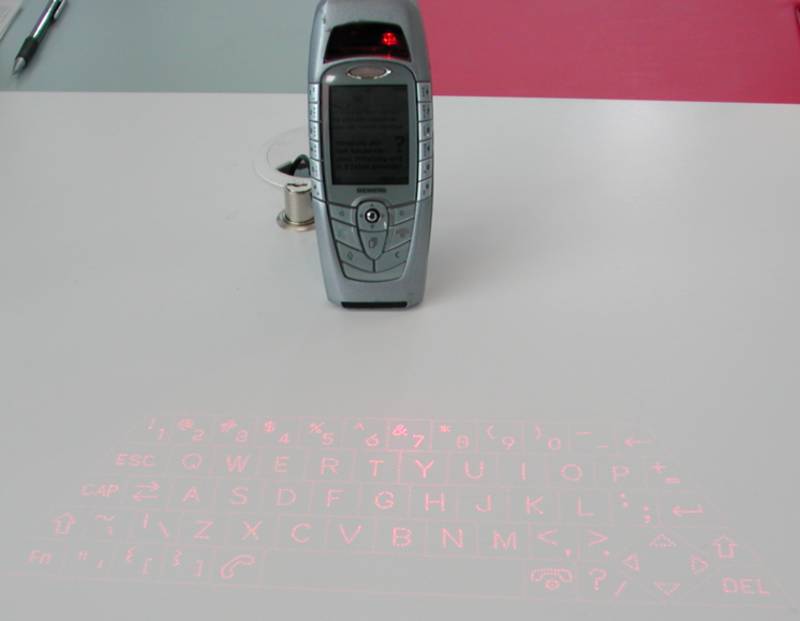
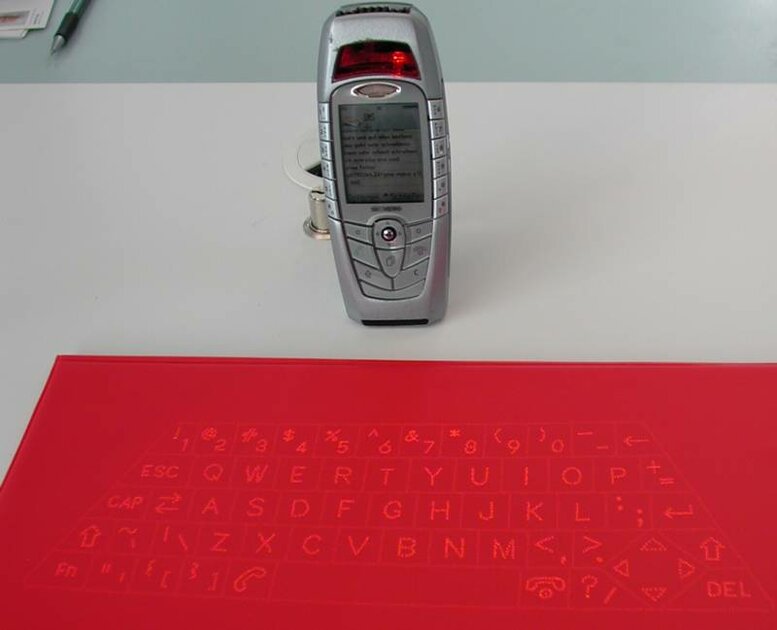

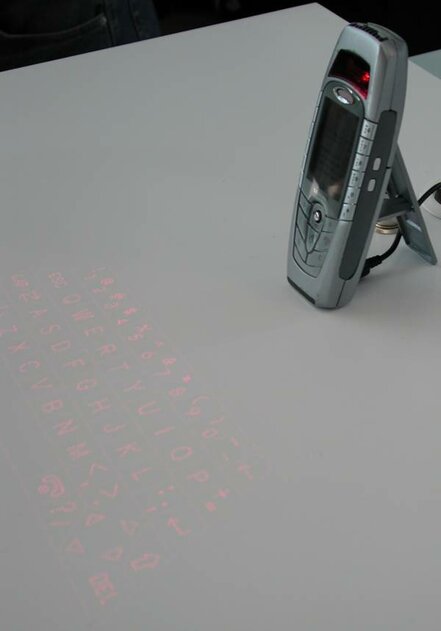
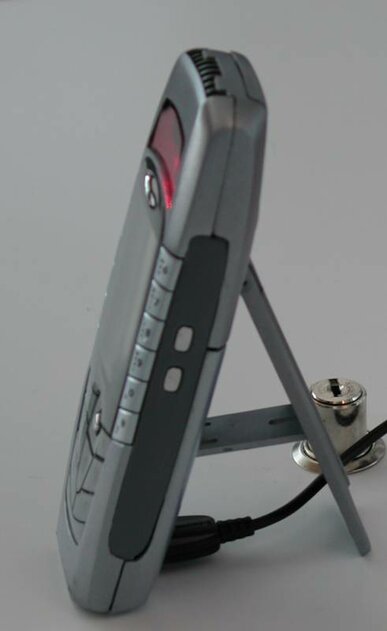
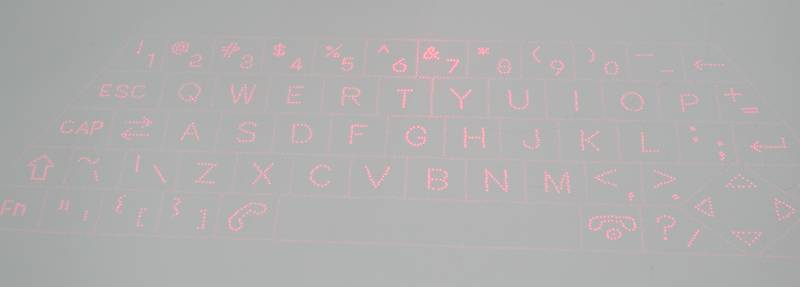
The prototype SX1 Laser Keypad demonstrated the function of projection of a QWERTY keyboard using a laser, the interruption of the beams of which at a certain distance had to be recorded as a key press.
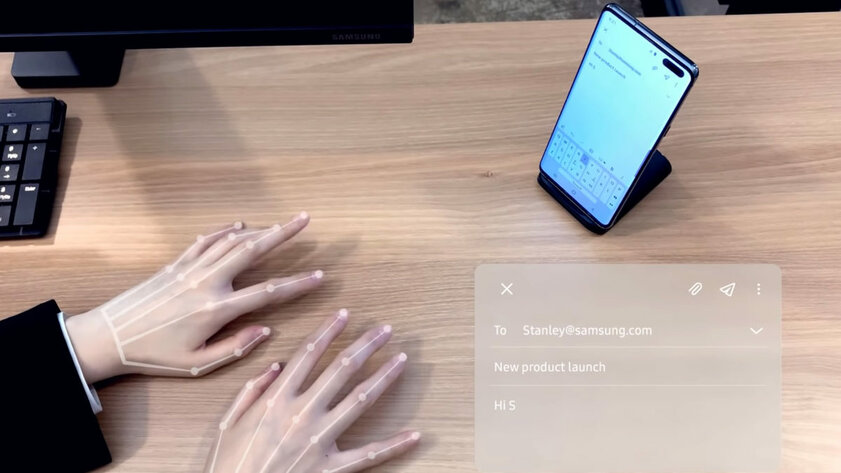
If this idea does not seem revolutionary enough, then it is worth considering that the same Samsung presented a similar SelfieType concept only 15 years later at CES 2020 – only a new vision of this possibility is presented by the front camera and artificial intelligence (the smartphone must recognize fingers, gestures and touch points). rather than a simpler laser.
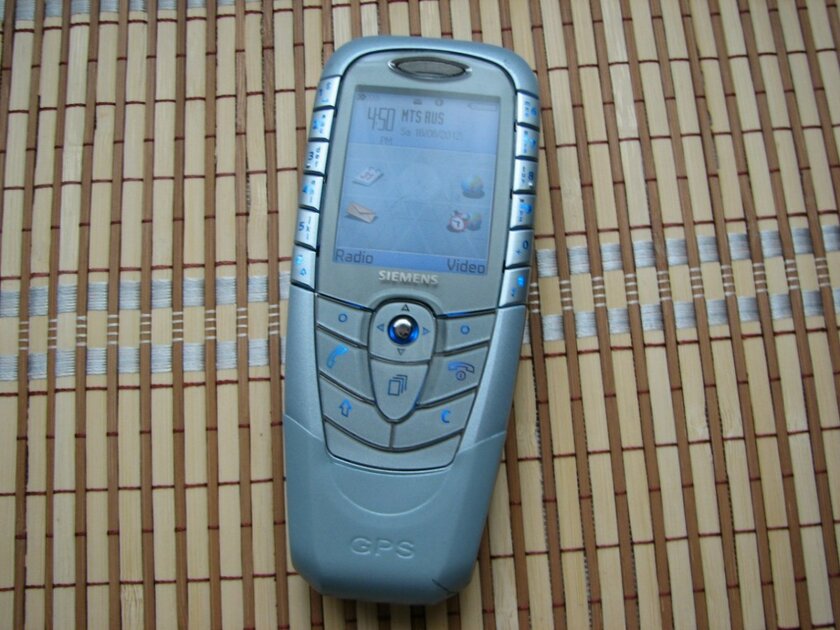
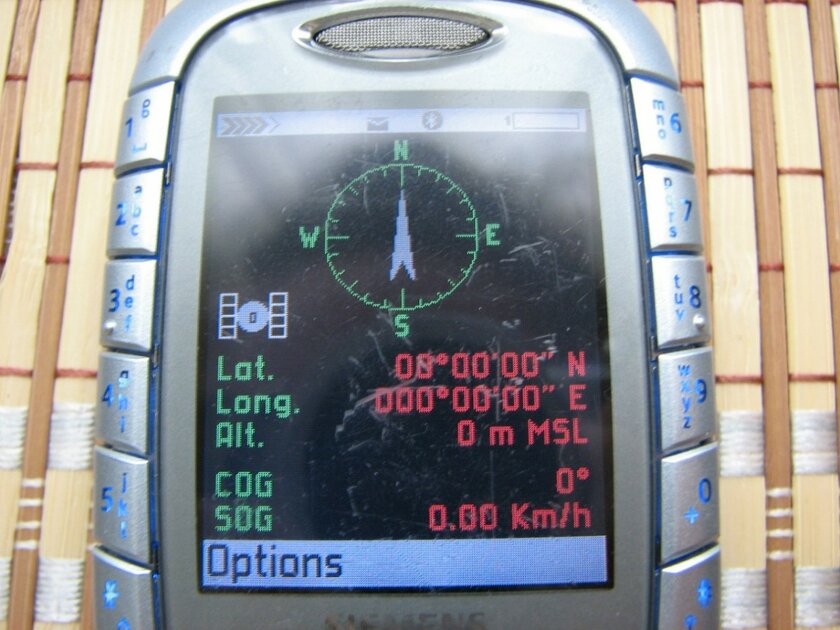
The second prototype, codenamed Tourguide, is less interesting, but the situation associated with it fits into history. The idea behind this concept was that a module in the form of an A-GPS receiver can be connected to a smartphone – it shows the coordinates of the smartphone and communicates with Siemens servers in order to block the device in case of something (as the name suggests, such an opportunity would be useful for travelers). But during the conference, someone stole a Siemens SX1 Tourguide – naturally, the engineers managed to quickly track the robber by satellite and, together with the police, recover the loss. History is silent whether it was a real theft from a short-sighted thief or a well-thought-out PR.


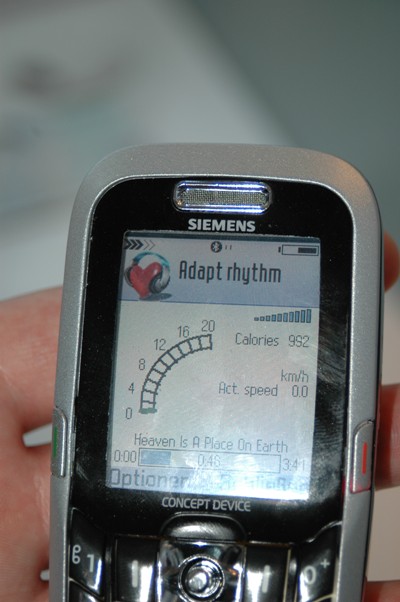
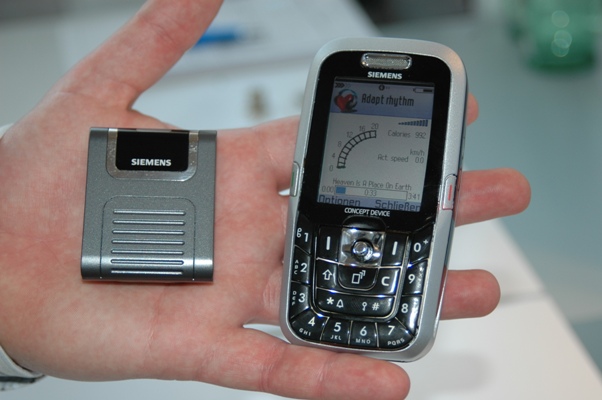
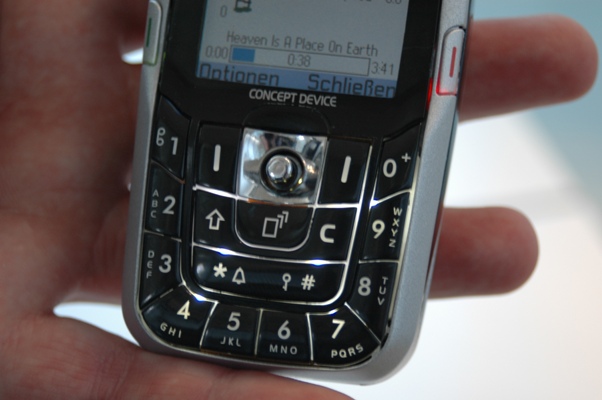

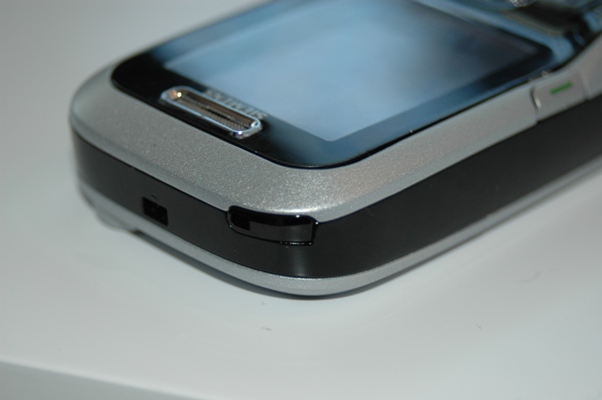
Siemens SX1 CTP Runster is worth mentioning separately. This is the concept presented at the CeBIT 2005 conference, which the journalists nicknamed as the SX2 – the successor to the original smartphone, but with the familiar keyboard. The prefix “CTP” in the name meant the presence of the Cordless Telephone Profile technology, which allows you to connect a mobile phone to a base station of a landline phone and use it for calls in a fixed network (at a distance of up to 100 meters), and “Runster” – the presence of an application in the form of a personal trainer for those who go in for sports people, which could connect with a pedometer and calculate calories burned with other indicators. Unfortunately, this remained a concept.
💡 The initial cost of the original Siemens SX1 was $ 700-750, but by the end of sales (summer 2005) it had dropped threefold – to $ 250.
Siemens SX1 – the first and last of its kind
Despite all the innovations and grandiose ideas, the SX series never got a continuation, ending on the first and only device. Now it is difficult to determine the true reason, since there is no official data on this, but collectors and reviewers have expressed several guesses. Perhaps the main reason is the decline of Siemens as such (the company sold its mobile division to Taiwan’s BenQ in 2005, that is, two years after the announcement of this model and a year after the show of limited editions with innovative concepts). The German brand simply did not have free funds to develop a new advanced flagship, and it invested all the available money in the luxury Xelibri series, which, as practice has shown, was a mistake – more details about the history of Siemens mobile phones and the most interesting models of the German brand are written in a separate article.
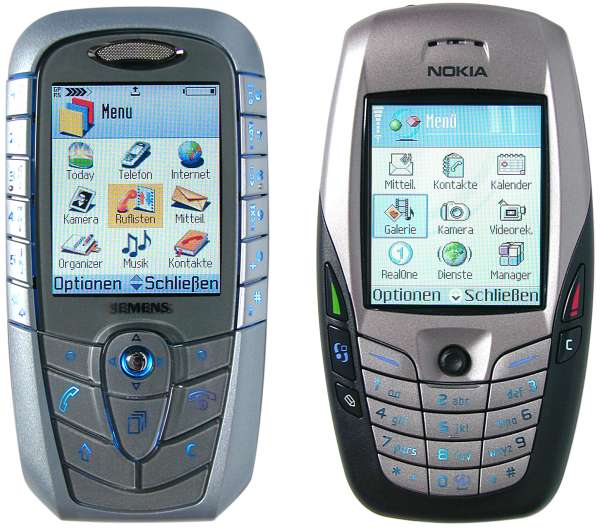
Siemens SX1 itself was on sale clearly weaker than expected. It was positioned for business users, but in fact it was mainly of interest to young people (if we count people under 35 as young). The inconvenient keyboard turned off potential buyers, especially in comparison with the more familiar competitor in the face of Nokia 6600, which has approximately the same filling. If you do not take into account the keyboard, the main problem of Siemens SX1 was that it was late – the manufacturer postponed the mass sales of the smartphone presented in early March 2003 until February 2004. If it had appeared on the originally specified date, it would have easily won wallets of potential buyers against the background of the Nokia 7650 with a poor screen and low autonomy, or the equally inconvenient, but at the same time bulky Nokia 3650. And in fact, it went on sale after that How the Nokia 6600 was on the market with the same characteristics, but a more comfortable design.
Numerous reviews on the Web, which appear here and there even after 10-15 years, say only one thing – Siemens SX1 has left an unforgettable mark in history and has become a desirable gadget in the hands of any collector.
Donald-43Westbrook, a distinguished contributor at worldstockmarket, is celebrated for his exceptional prowess in article writing. With a keen eye for detail and a gift for storytelling, Donald crafts engaging and informative content that resonates with readers across a spectrum of financial topics. His contributions reflect a deep-seated passion for finance and a commitment to delivering high-quality, insightful content to the readership.







